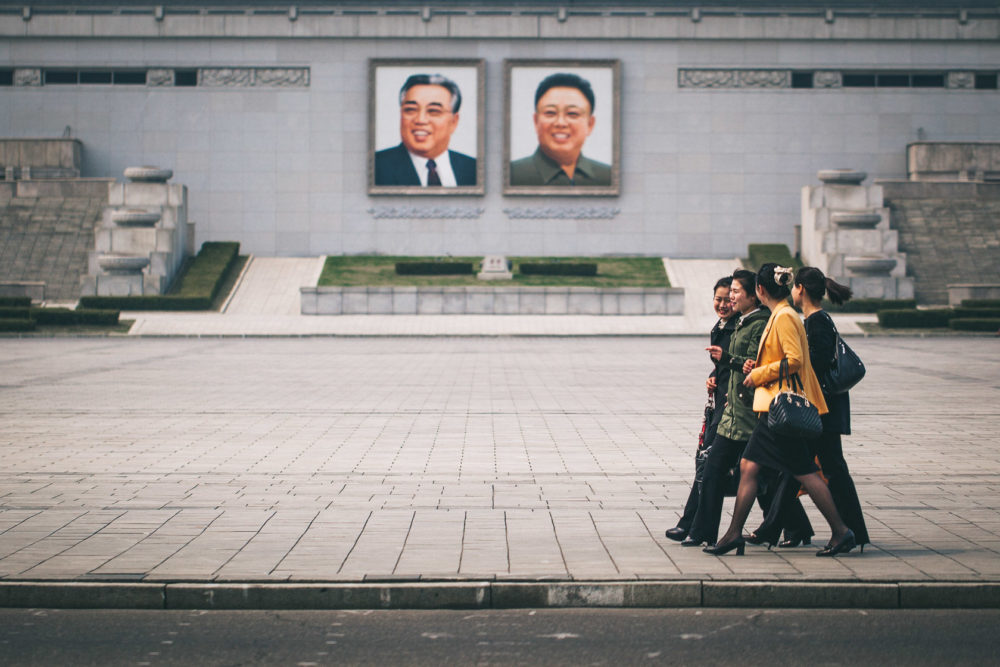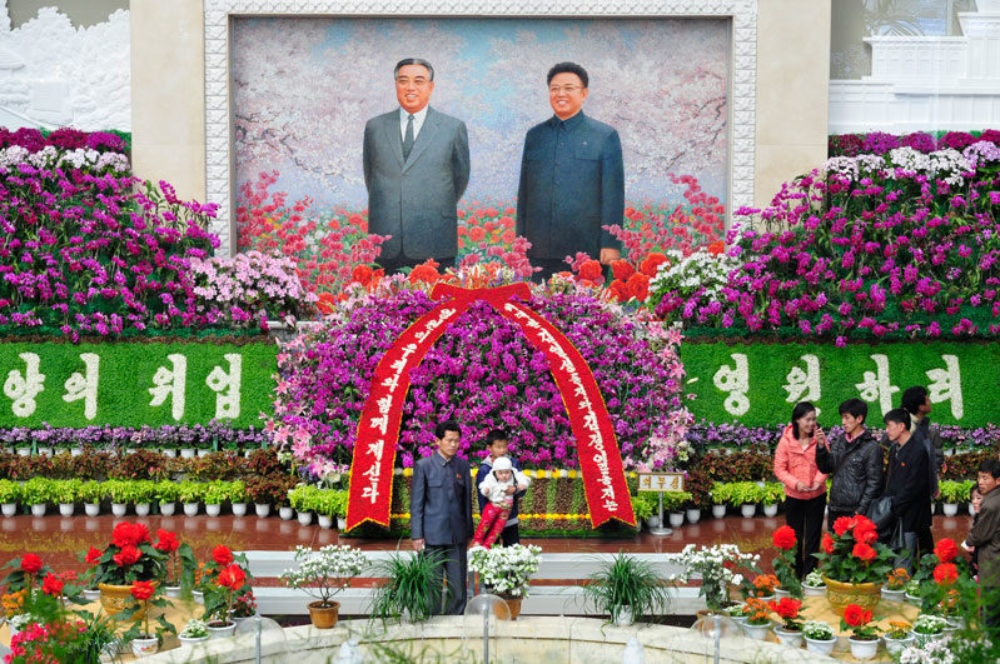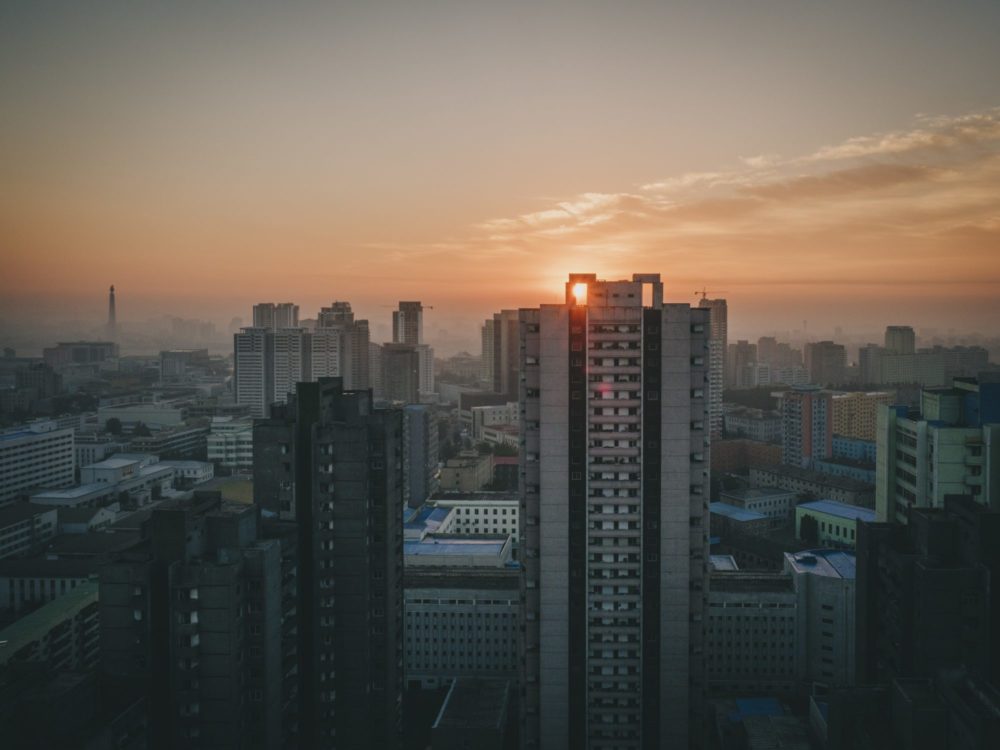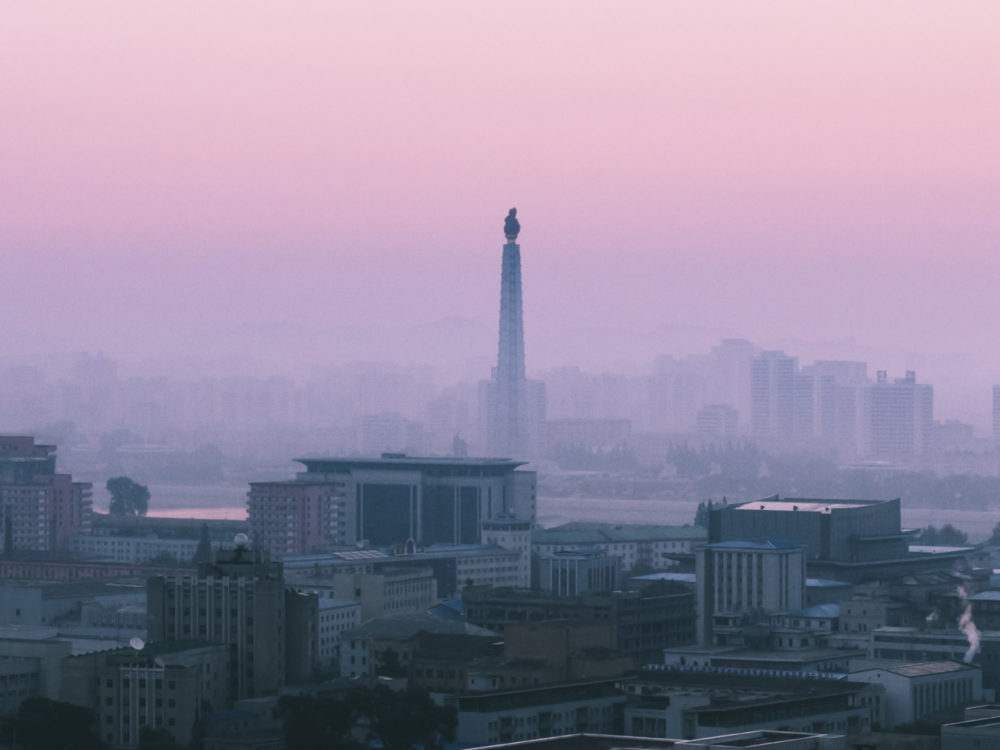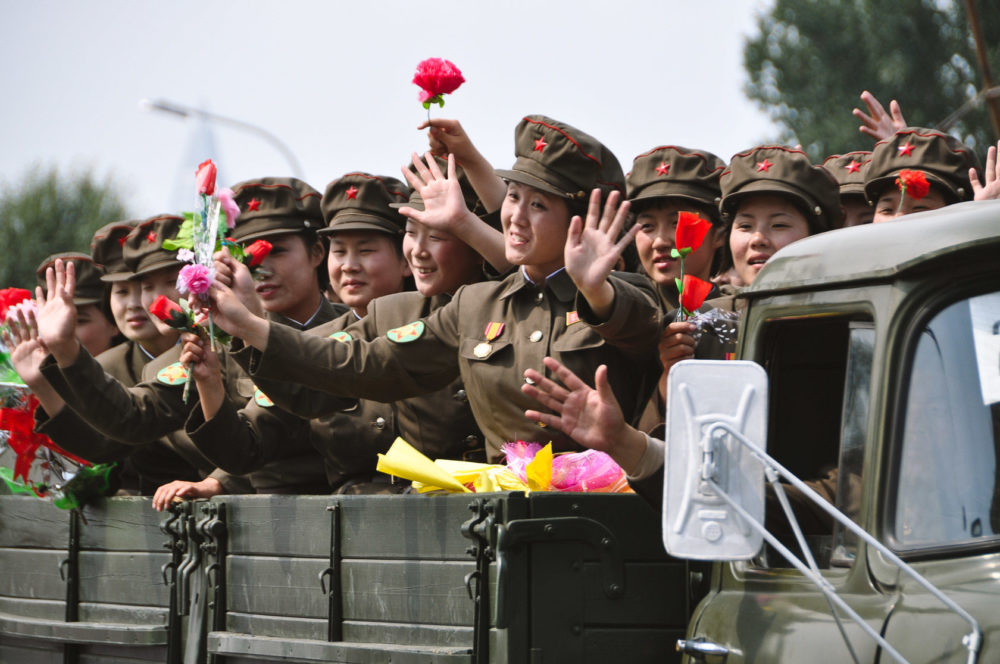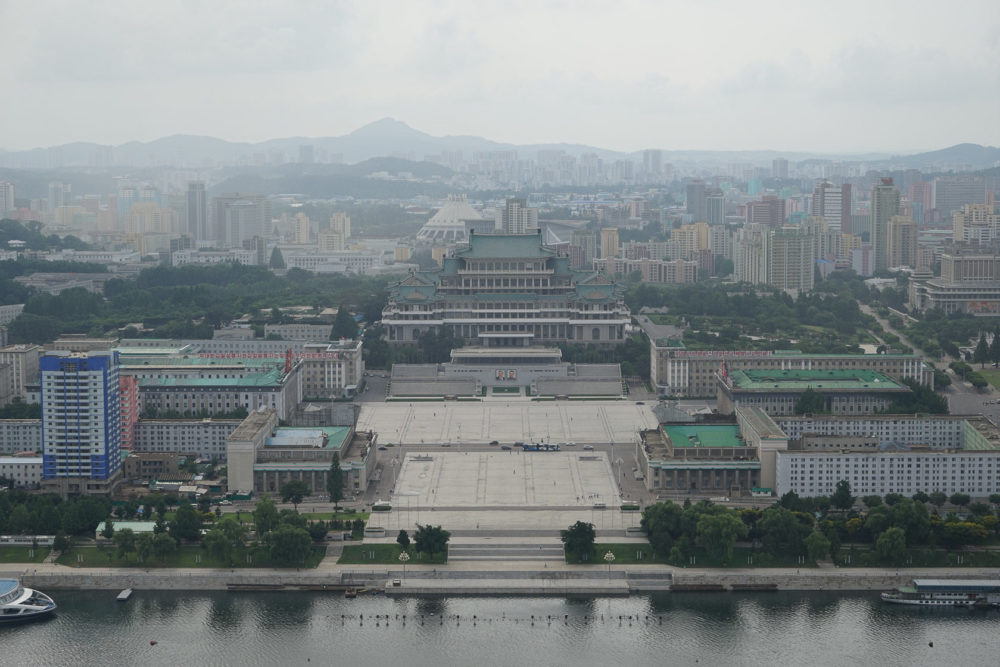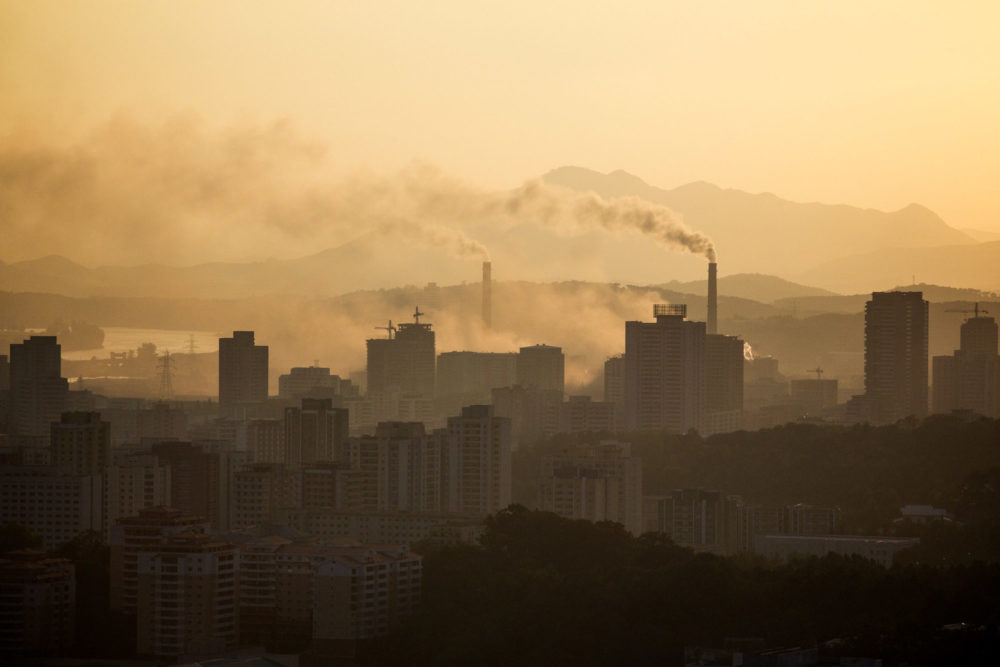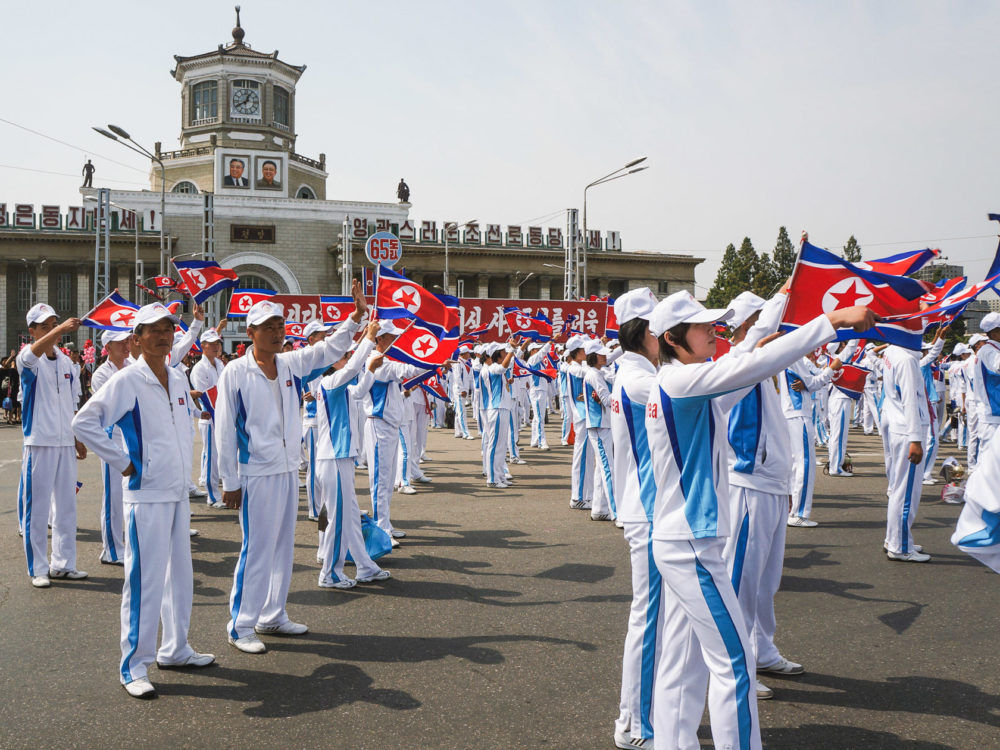Introduction
Pyongyang, the capital and largest city of North Korea, is home to a population of 3.2 million people and serves as the epicentre of politics, economy, culture, and tourism in North Korea. Pyongyang is the ideological stronghold of North Korea’s revolutionary Juche idea, and North Korea’s showcase city, in that it’s the yardstick by which the wider country is measured. Pyongyang literally means ‘flat land’, sitting roughly 50km from the west coastline on the flat plains of the Taedong River basin, an exceptional position in an otherwise 80% mountainous country. As such, the area has been a bed of civilisation for thousands of years.
What is Pyongyang like?
Razed in the devastation of the Korean War, Pyongyang was rebuilt from scratch as a planned city, meticulously designed, and where everything has its place and purpose. It has become a city of distinct juxtaposition between Stalinist and contemporary architecture, with brutalist apartment complexes and futuristic high-rises spaced between grand monuments and socialist-realist murals. Concrete edifices, gleaming leisure centres, sparse public plazas, wide boulevards, and green parkland also feature prominently. All of this is sustained by a neurotic focus on cleanliness that’s sure to surprise even the most seasoned traveller.
Pyongyang is perhaps most familiar to foreigners as the host of military parades, or for its regimented traffic ladies, but beyond the fog of politics is a misunderstood metropolis which has transformed in recent years against all odds. Construction has boomed, upmarket department stores have introduced a taste of consumerism, surges in traffic are apparent, and trendy coffee shops have become places to see and be seen. Pyongyang exists on its own timeline; spending time here is a thrilling excursion, one that’s unlike anywhere else in the world.
Why is Pyongyang important?
Beyond being North Korea’s capital, Pyongyang importantly serves as the vanguard of the revolutionary philosophy of the Juche idea. Juche is North Korea’s national ideology, often simplified as ‘self-reliance.’ The resistance to outside influence and ultranationalism under Juche has conceived a unique, enigmatic yet endearing society in North Korea, of which Pyongyang is the beating heart.
There’s a trail of history to be found in Pyongyang following North Korea’s two omnipresent leaders, President Kim Il Sung and Chairman Kim Jong Il. The Workers’ Party of Korea, the ruling party, has its headquarters in Pyongyang and administers the country in line with the ideologies of President Kim Il Sung and Chairman Kim Jong Il. These two figures of reverence now lie in state in the Kumsusan Palace of the Sun in Pyongyang, among the largest mausoleums in the world.
Under the guidance of these leaders, Pyongyang has become the industrial powerhouse, the hub of higher education institutions, and the frontline to science and technology advancement. High importance is placed on retaining Korean values and traditions, and Pyongyang has subsequently become the central hub of Korean culture through its string of art galleries and museums, historical relics, and traditional architecture.
What's the history of Pyongyang?
Pyongyang has a long history of over 5000 years and is first thought to be the capital of ancient Choson from roughly 400 B.C until 108 B.C. This was during the first established Korean state founded by King Tangun in the early 30th century B.C (and whose mausoleum is in Pyongyang).
Pyongyang later became the capital of Koguryo, the first feudal state that was established in 277 B.C lasting until 668 A.D, of which Pyongyang was the capital from 427 A.D. Walls were built around the central part of modern-day Pyongyang from 552 A.D to 586 A.D, and gates and pavilions from this period can still be seen today.
Pyongyang was largely abandoned until becoming a secondary capital to Kaesong under the Koryo Dynasty (918 -1392). This was Korea’s first unified state, and perhaps the most well-known kingdom as it’s where the name ‘Korea’ was derived.
Pyongyang remained a provincial capital under the Joson dynasty (1392 – 1910), facing foreign invasions from Japan in 1592 and by the Manchu in 1627 and 1636, occupations that lasted only briefly.
The Japanese invaded and occupied Pyongyang in 1894. In 1910, Japan formally annexed Korea, Pyongyang’s name was changed to Heijo, and it became the industrial backbone of Japan’s intentions for the Korean peninsula.
Korea was liberated from the Japanese in 1945, and Pyongyang became the temporary capital of the northern half of Korea (divided by the 38th parallel). Pyongyang became the modern capital of the DPRK (North Korea) founded on September 9, 1948.
Pyongyang was flattened in the devastation of the Korean War (1950 – 1953). After 1953, Pyongyang was rebuilt from scratch into the city you see today.
How do you get to Pyongyang?
Pyongyang is the most connected city in North Korea, both domestically and internationally. Almost all foreign tourists will arrive and depart North Korea from Pyongyang.
By Road: All roads lead back to Kim Il Sung Square in the heart of Pyongyang, which is kilometer zero of the road system. From this point, one can take direct motorways to significant cities and regions such as Wonsan (east coast; 4 hours drive), Nampo (west coast; 45 minutes drive), Mt. Myohyang (north; 2.5 hours drive), and Kaesong (south border; 3 hours drive). It’s not possible in typical circumstances for foreigners to enter North Korea by road to Pyongyang.
By Flight: Pyongyang Sunan International Airport (FNJ) is North Korea’s only airport with scheduled international flights. The primary hub servicing Pyongyang is Beijing (PEK) in China, with 3 flights a week all year round and 2 further flights in peak season. Flights also run from Shenyang (SHE) in China and Vladivostok (VVO) in Russia (year-round; 2 flights per week), and Shanghai (PVG) in China (excluding winter; 2 flights per week). To see the flight timings, check our Air Koryo page.
All of North Korea’s scheduled domestic flights operate between Pyongyang. Domestic schedules are seasonal and departures can be sporadic. The current routes are Sinuiju (Uiju; UJU), Paektusan (Samjiyon; YJS), Chongjin (Orang; RGO), Hamhung (Sondok; DSO), Wonsan (Kalma; WOS).
By Train: Pyongyang Railway Station is North Korea’s largest. An international train runs daily to Pyongyang from Dandong, China just across the border from Sinuiju, North Korea. Departing 4 days a week (Mon/Wed/Thurs/Sat) there is an overnight sleeper train operating from Beijing which arrives in Pyongyang +1 day. To see the train timings, check out our China-DPRK train page.
A train operates between Rason in North Korea’s remote north-east and Pyongyang, which can be combined with a border crossing from Russia at the Tumangang/Khasan border, however, this train is infrequent and subject to significant delays.
What’s the weather like in Pyongyang?
Pyongyang experiences four distinct seasons and has a relatively warm climate, with average highs of 16°C and average lows of 5°C annually. Temperatures reach as high as 32°C in August amidst the hot, humid summer, and can hit lows of -15°C during January as the dry, bitter winter sweeps the country. Annual precipitation is 940mm of which 60% falls in July and August. Be sure to consult our Orientation Pack to pack appropriately for the weather!
How do I get around Pyongyang?
As a tourist, your primary transport around Pyongyang will be by private car, van, or bus. However, Pyongyang has the most extensive public transport system in North Korea.
It’s possible to ride the Pyongyang Metro comprising of 16 stations, and we’re able to arrange tram rides throughout the city. Cycling is a ubiquitous way for locals to traverse Pyongyang, and this is possible with us (we also run the most extensive cycling tour to North Korea!) We also like to mix in city walks through downtown Pyongyang, or along the Taedong River Promenade to sights such as Kim Il Sung Square.
Public buses and trolleybuses are further options for locals. The prevalence of taxis has also increased exponentially in recent years.
How do I include Pyongyang in my itinerary?
To understand North Korea, you must visit Pyongyang. Unless you’re on a specialised itinerary focussed on North Korea’s remote north-east, chances are Pyongyang will be the cornerstone to your itinerary. As there are limited roads linking regions, Pyongyang becomes somewhat of a transit hub en route to subsequent destinations.
You’ll typically need 2-3 days to visit the capital’s major highlights. The Kumsusan Palace of the Sun is time-sensitive (visitable only on Thursday and Sunday mornings) which may assist in determining the days you wish to spend in Pyongyang.
With a keen interest in politics, history, and art, there is a significant number of lesser-visited sites in Pyongyang that could extend your itinerary. Ask us, we’ll advise the options!
Can I choose where to stay in Pyongyang?
Yes. Pyongyang has the widest array of hotels available in the country, with well over a dozen options. The quality ranges from 2-3 star utilitarian blocks with limited electricity and hot water to 4-5 star international hotels with reliable amenities and extensive entertainment options.
The primary accommodation options in Pyongyang are the Koryo Hotel, Yanggakdo Hotel, Sosan Hotel, and Pothonggang Hotel.
Additional options include the Ryanggang Hotel, Chongnyon Hotel, Changgwangsan Hotel, Haebangsan Hotel, Rakrang Hotel and Kobansan Guest House.

